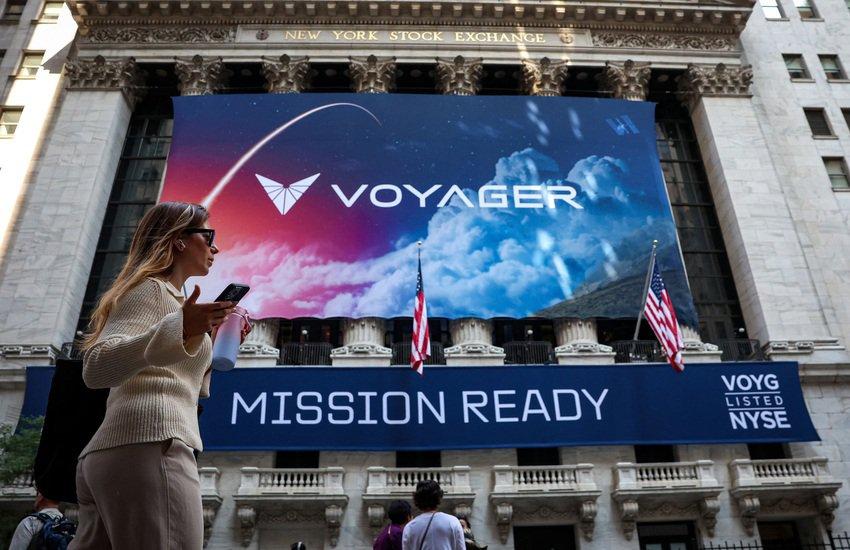Small-cap defense and space player Voyager Technologies (VOYG) is making waves again, this time with its acquisition of Estes Energetics, a niche leader in propulsion materials and missile-defense compounds. Fresh off its Q3 earnings that showcased 31% YoY growth in its defense segment and a healthy $189 million backlog, Voyager now looks to bolster its tech stack by taking a deeper plunge into energetics. The goal? Full vertical integration from raw materials to missile-stage roll control. Estes, a quiet but strategic supplier in missile defense, offers that upstream capability. And for Voyager, that could be the missing link in its end-to-end defense supply chain. With its Starlab ambitions and a push into edge-AI and advanced comms through recent M&A, this move extends Voyager’s footprint right into the guts of missile tech. But with rich LTM valuation multiples and negative free cash flow, is this vertical climb sustainable? Let’s unpack!
Enhancing Strategic Control Through Vertical Integration
By acquiring Estes Energetics, Voyager isn’t just expanding its portfolio; it’s tightening the bolts on its supply chain. Estes gives Voyager control over the production, quality, and certification of energetics—key materials that fuel propulsion systems and missile interceptors. In missile defense, where every component must meet rigorous defense-grade standards, vertical integration reduces risks associated with third-party reliance. For programs like Next-Generation Interceptor (NGI) and space-based interceptors under the Golden Dome initiative, controlling inputs from inception to launch increases reliability and may enhance Voyager’s competitiveness in future contract bids.
Strategic control also means cost predictability, which is no small feat in the high-volatility world of defense supply. Estes’ integration could help Voyager better absorb inflationary pressures or raw material shortages, especially if the U.S. industrial base continues to face geopolitical supply constraints. And it isn’t just about cost; owning the energetics IP could potentially enable Voyager to tailor its propulsion systems more precisely, unlocking performance efficiencies that could differentiate it in both U.S. and allied defense markets.
This shift echoes a broader playbook seen among primes—build proprietary, vertically-integrated capabilities to avoid being boxed out. And while Voyager is far from being a Raytheon or Lockheed, this small-cap wants to play bigger than its weight class.
Aligning with National Defense Priorities and DoD Tailwinds
Voyager’s defense ambitions are no secret, and Estes’s specialization in missile-defense compounds plugs directly into rising Department of Defense (DoD) priorities. Programs like NGI, Golden Dome, and space-based ISR are receiving renewed funding thanks to the Space Force budget and international tensions. Estes adds the energetics layer needed for these systems, which could make Voyager a more rounded supplier in government procurement processes.
With the U.S. government looking to shore up domestic defense manufacturing, Voyager’s Estes deal positions it well to benefit from "Buy American" pressures and security-driven sourcing preferences. Estes operates onshore, has its roots in high-performance energetics, and brings in capabilities that directly support U.S. missile deterrence. This could enhance Voyager’s eligibility for key DoD contracts and multi-year procurement cycles.
Moreover, Voyager has already demonstrated relevance by being part of mission threads for Golden Dome and submitting multiple related proposals. Estes could elevate these proposals with deeper technical integration, allowing Voyager to bid more aggressively or deliver faster. In an ecosystem where timelines and capabilities can dictate awards, having Estes in-house could mean more influence at the RFP table. This isn’t just a growth lever—it’s a potential defense moat.
Strengthening the Case for Mission-Critical Innovation
Voyager spends over 18% of its revenue on innovation—an unusually high clip for a defense player, let alone a small-cap. But there’s method in the madness. Estes bolsters the mission-critical segment of Voyager’s R&D. It gives the company greater material science depth, enhancing not just product design but also IP defensibility. For example, the combination of Estes’ energetics and Voyager’s control systems could result in propulsion subsystems uniquely optimized for both space and missile defense use cases.
Innovation is also happening at the edge: Voyager’s investment in Latent AI suggests it wants to combine real-time processing with hardware subsystems. Add in Estes, and you’re suddenly looking at propulsion systems embedded with edge intelligence—a potentially powerful combo for agile missile platforms. Such layered innovation could appeal to the Pentagon’s increasing focus on modular, smart munitions.
In addition, Estes may accelerate Voyager’s push into ISR and secure communications by enabling energetically efficient designs. These kinds of cross-stack synergies could help Voyager move from being a component supplier to a systems-level integrator. That’s a significant leap in defense land, where margin expansion and long-term contracts hinge on broader scope and integration.
Potential Supply Chain Resilience and Financial Optionality
Supply chain fragility has become a recurring nightmare in defense procurement. Voyager, by acquiring Estes, may be pre-emptively strengthening its resilience. This isn’t just about upstream inputs; it's also about downstream flexibility. If Voyager can now fine-tune propulsion materials to align with design changes mid-development, it could shorten time-to-delivery and reduce rework—a boon for cost containment and client satisfaction.
Financially, while the Estes deal isn’t likely to move top-line revenue dramatically in the near term, it could enable Voyager to boost margins by eliminating third-party markup on critical materials. And in the long game, owning more of the value chain provides optionality: think JV opportunities, licensing, or even spin-offs once the IP matures.
However, investors should note the flip side. Voyager’s LTM TEV/EBITDA sits at a steep -9.62x, and its free cash flow yield remains deeply negative at -29.1%. Integration risk and execution risk are real, particularly for a company still operating at a loss. Estes may deepen Voyager’s moat, but it also adds complexity and upfront cost. Financial optionality is only valuable if operationally realized.
Final Thoughts

Source: Yahoo Finance
Voyager Technologies' stock has lost more than 70% of its value in the last 6 months and the news regarding its acquisition of Estes Energetics has done little to change its trajectory. With LTM EV/EBIT at -8.24x and a free cash flow yield of -29.1%, Voyager doesn’t have the greatest profile in terms of valuation. However, it is important to mention that the acquisition aligns well with government priorities, enhances technological capability, and shores up supply chain resilience. If executed correctly, the move could accelerate Voyager’s evolution into a more full-spectrum defense and space tech player. But execution remains key. For now, it looks to be a strategic step in the right direction—but one that deserves a close watch.













